UX & UI
5 min read
How Airbnb Leveraged UX Laws for Exponential Growth
As a frontrunner in the sharing economy, Airbnb’s meteoric rise can be attributed to its adherence to the Laws of UX, principles that forge connections, foster trust, and facilitate ease of use.
This is how Airbnb utilises these principles to offer an unparalleled user experience.
1. Law of Proximity
Airbnb’s Proximity Search
The Law of Proximity in UX asserts that objects that are close to each other are perceived as a unified group. It helps designers group related elements together, enhancing the clarity and structure of a user interface.
Airbnb meticulously utilises the Law of Proximity by grouping related items together in their interface. The feature bundles together properties, local attractions, and eateries in a specific locality, helping users to intuitively navigate through offerings in a geographical area without feeling overwhelmed.
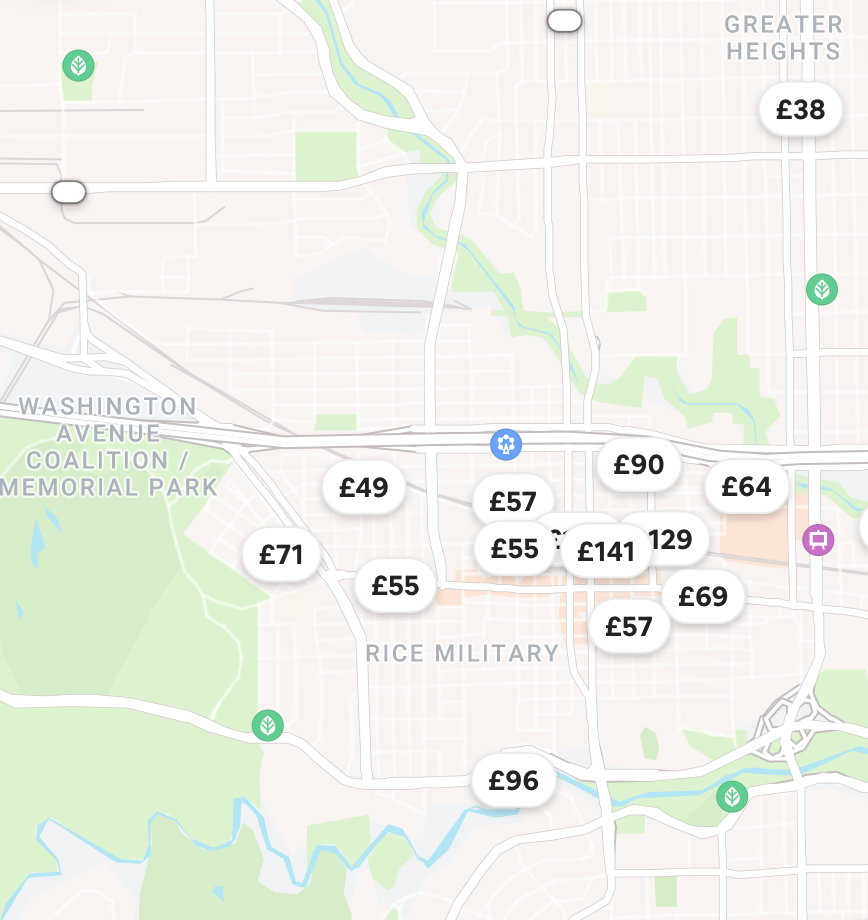
2. Hick’s Law
Streamlined Decision Making through Filters
By providing users with a variety of filters and just enough (but not too many!) options to choose from, Airbnb helps streamline the decision-making process. This implementation of Hick’s Law, which states that the time it takes to make a decision increases with the number and complexity of choices, ensures that users can easily narrow down their options, avoiding decision fatigue and enhancing their overall experience.
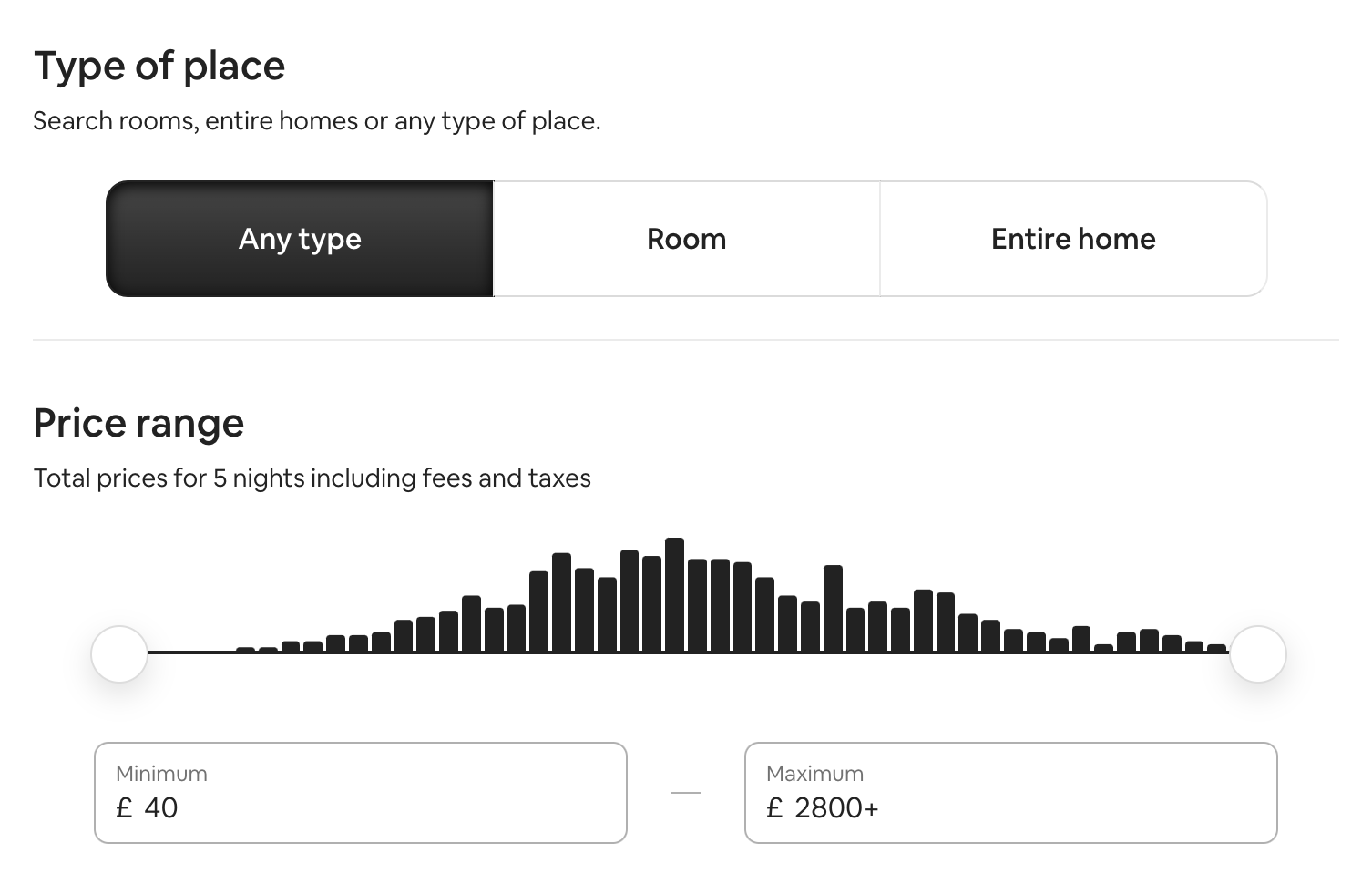
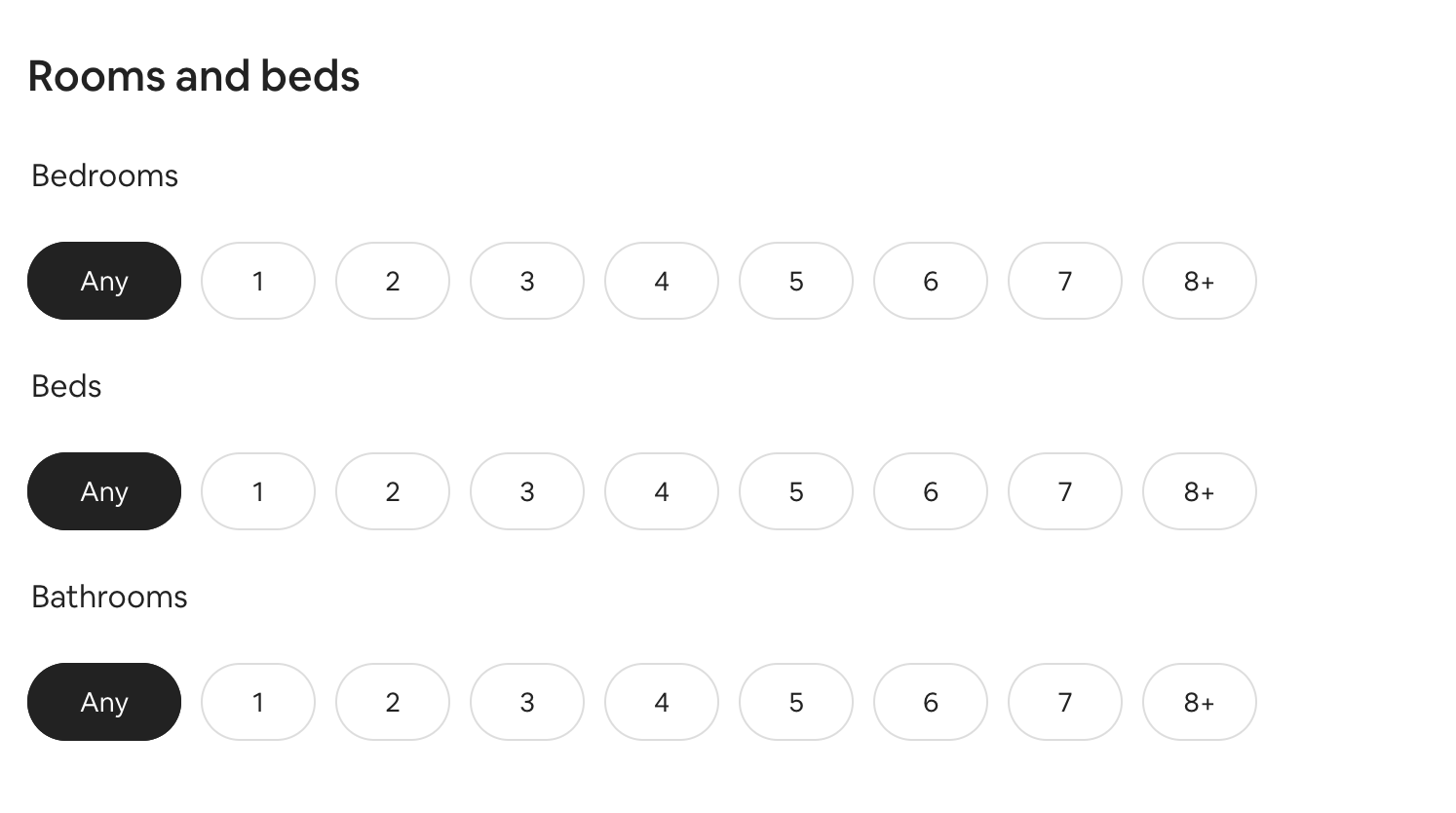
3. Fitts’s Law
Accessible Call-to-Action Buttons
Fitts’s Law is a principle from human-computer interaction and ergonomics which predicts the time it takes for a person to move to and select a target, such as pressing a button or clicking an icon. It’s particularly relevant in the world of interface design.
In simpler terms, Fitts’s Law suggests that:
- The closer and larger a target is, the faster it is to click on that target.
- The further away and smaller a target is, the longer it takes to click on it.
Airbnb’s platform implements Fitts’s Law effectively by placing primary call-to-action buttons like ‘Reserve’, ‘Wishlist’, and ‘Message Host’ prominently and within easy reach, ensuring that the user’s journey from browsing to booking is as seamless as possible.

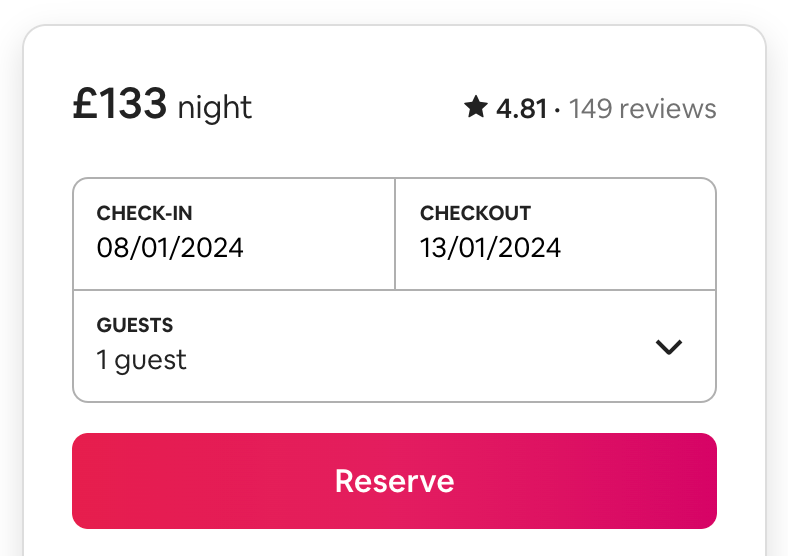
4. Law of Prägnanz
Uncluttered Interface and Simple Design
The platform embodies the Law of Prägnanz, which postulates that individuals perceive complex structures in the simplest form possible. Airbnb’s minimalist yet vibrant interface allows users to navigate through a plethora of information without being engulfed by complexity.
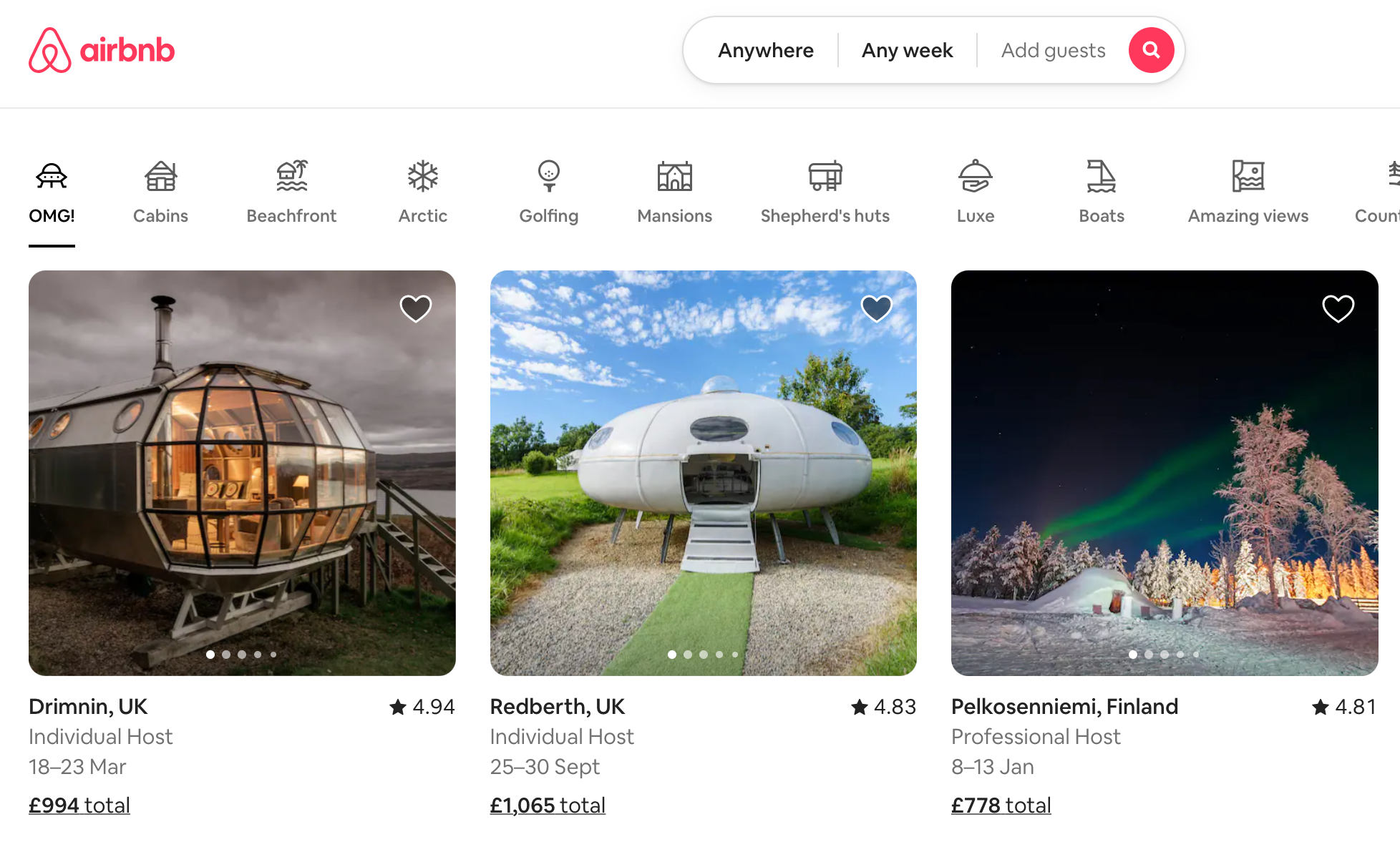
5. Jakob’s Law
Consistent User Interface with Familiar Elements
Airbnb uses Jakob’s Law by maintaining consistency across its user interface, incorporating familiar design patterns. This ensures users can seamlessly navigate the platform, drawing upon their existing knowledge from using other websites and applications, resulting in an intuitive and user-friendly experience. No fancy, unexpected UX flow – it feels familiar and predictable.
6. Law of Common Region
Segmented Information with Clear Boundaries
Airbnb utilises the Law of Common Region, which suggests that elements tend to be perceived into groups if they are sharing an area with a clearly defined boundary. This is evident in how the website segments information about each listing into clearly delineated sections, making it easy for users to assimilate information.


7. Aesthetic-Usability Effect
Engaging Visuals and Appealing Aesthetics
Adhering to the Aesthetic-Usability Effect, Airbnb has created a visually appealing platform that not only engages users but also promotes usability. High-quality images and an aesthetically pleasing colour palette create a positive user perception, making the platform more user-friendly.
Airbnb’s success story is deeply rooted in its adherence to the Laws of UX. By fostering a platform that is intuitive, uncluttered, and user-centric, Airbnb has managed to carve out a niche in the competitive travel industry.
Its meticulous application of these principles translates to a seamless and enjoyable user experience, setting a benchmark for others in the industry to follow.























